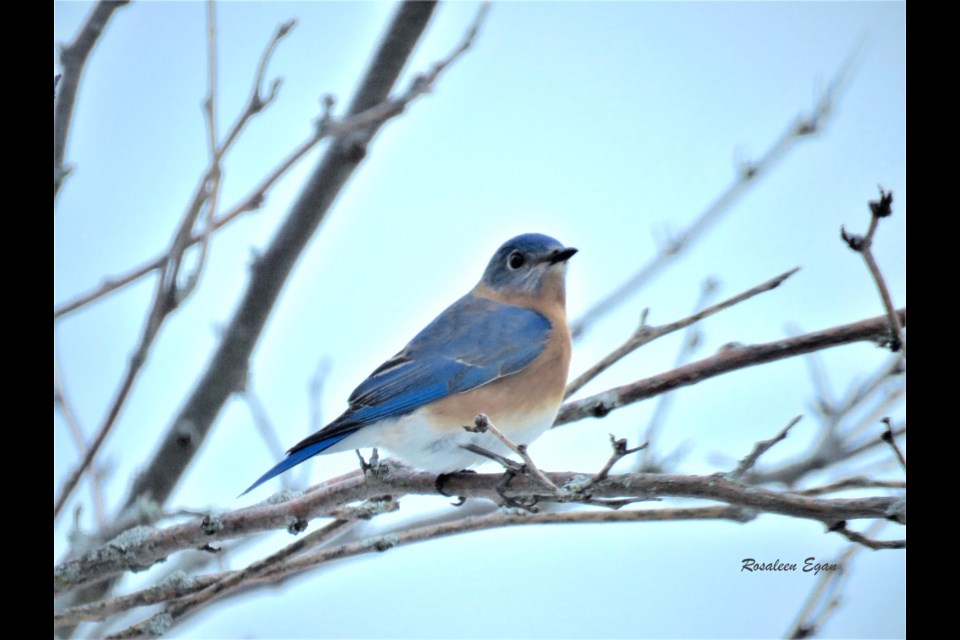My January began with a visit from three Eastern Bluebirds. By my expectations, they ought to be in the sunny south for the winter. Instead, they sat defiantly cheerful on the fence in a cold January rain. I suspect these bluebirds are siblings that were hatched in one of my bluebird nesting boxes.
I have talked about bluebirds from time to time as the purpose of this column is to discuss bird behaviours and sightings on the farm where I live.
Eastern Bluebirds are remarkable and beautiful additions to the neighbourhood since I installed two nesting boxes in the spring of 2020.
Bluebirds also have the reputation of being winged messengers of happiness. Many world cultures, including North American indigenous peoples, regard sighting of bluebirds as a symbol of hope, renewal, and love. I must say on that first day of January in dismal weather and challenging news of the state of the pandemic, they offered a lift and a reassurance.
I have seen them since, and I take heart each time.
It seems it’s not totally unusual to see Eastern Bluebirds in Southern Ontario in the winter. Birds of the World website says bluebirds are a partial migrant, “with migration associated with weather and/or food availability”. It goes on to say further studies are needed on what influences an individual bird, or group of birds, to chose to stay near nesting areas, and others to move south.
The bluebirds who visited me seem to be tolerating the cold. They did check out the nesting boxes although it doesn’t appear they are spending nights in them as they might. There are options for them with lots of barn space for them to huddle together for the night. Besides insects, they will eat wild berries and fruit. Another member of the thrush family, the American Robin, also sometimes choses to live through Ontario winters enjoying frozen fruit and berries. Both typically do well.
Sightings of both are associated with spring. Seeing them in winter assures us spring will return and brightens even the most miserable day. Perhaps even thinking of such cheerful birds, can be uplifting.
In researching the association of bluebirds with happiness, I came across a song from 1934 called "The Bluebird of Happiness". According to the Song of America website, it was very famous in the early twentieth century. “More than one million copies of recordings of this song were sold. The music is by Santor Harmati and the text is by Edward Heyman”.
The message of the song is timeless, and speaks of how no matter the station in life, we all have similar emotional experience:
The king upon his throne, the jester at his feet,
The artist, the actress, the man on the street,
It’s a life of smiles, and a life of tears,
It’s a life of hopes, and a life of fears.
The Eastern Bluebirds visiting throughout January, and particularly on the first day in the rain reflect the theme of the song and carry a message of hope from which we can all benefit.
And if things don’t look so cheerful,
Just show a little fight,
For every bit of darkness,
There’s a little bit of light.
For every bit of hatred,
There’s a little bit of love.
For every cloudy morning, there’s a midnight moon above.
The song concludes in the voice of the song writer:
Be like I, hold your head up high,
‘Til you see a ray of light and cheer.
And so remember this, life is no abyss,
Somewhere there’s a bluebird of happiness.
songofamerica.net/song/bluebird-of-happiness/
I share experiences of bird visitors to this property with readers every couple of weeks. Until next time, keep your eye to the sky, and look for birds that may come by.
Rosaleen Egan is a freelance journalist, storyteller, and playwright. She blogs on her website: rosiewrites.com



